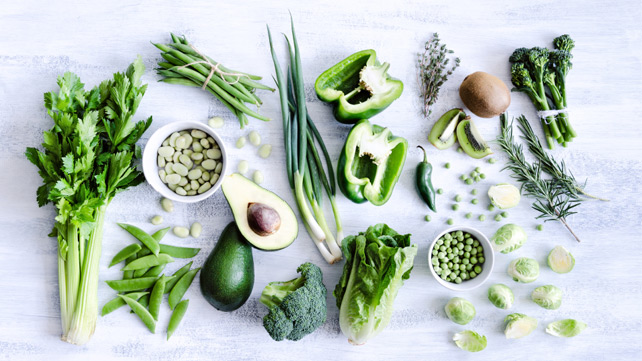 Very low-calorie diets
Very low-calorie diets
A 500-calorie diet is an extreme form of a very low-calorie diet
(VLCD). It requires you to drastically reduce the amount of food you
eat,
usually to a maximum of 800 calories per day.
VLCDs use meal replacements like drinks, shakes, and prepared food bars instead of meals for at least two meals a day. VLCDs are meant for people who are very overweight and have been unable to lose weight after trying many diet plans.
This diet can be dangerous and requires medical supervision. Read on to learn more about the risks and goals of the 500-calorie diet.
usually to a maximum of 800 calories per day.
VLCDs use meal replacements like drinks, shakes, and prepared food bars instead of meals for at least two meals a day. VLCDs are meant for people who are very overweight and have been unable to lose weight after trying many diet plans.
This diet can be dangerous and requires medical supervision. Read on to learn more about the risks and goals of the 500-calorie diet.
Don’t do it alone
1. Don’t do it alone
A doctor will prescribe a 500-calorie diet if he or she has
decided that it’s critical for you to lose weight. They do this by
weighing your general health concerns against the risks and potential
complications of drastic calorie reduction.
If your doctor hasn’t recommended a 500-calorie diet, you should not try this diet. A diet like this has risks and precautions associated with it. A doctor should supervise you while on this diet.
If your doctor hasn’t recommended a 500-calorie diet, you should not try this diet. A diet like this has risks and precautions associated with it. A doctor should supervise you while on this diet.
5:2 diet plan
2. The 5:2 diet plan
Some people use a 500-calorie diet as part of the recently
popularized 5:2 intermittent diet plan. Under this plan, you eat a
balanced Mediterranean-style diet
of about 2000 calories for five days of the week and then limit
yourself to 500 low-carbohydrate calories per day for the other two
days. The two “fasting” days are usually nonconsecutive.
There is very little evidence to support the benefits of 5:2 intermittent dieting over daily calorie reduction.
There is very little evidence to support the benefits of 5:2 intermittent dieting over daily calorie reduction.
3. How much is 500 calories?
You can get an idea of how much (or how little) 500 calories is when you consider the calorie count of popular foods. The USDA
calculates that two handfuls of peanuts or a slice of pepperoni pizza
contains about 250 calories. An apple contains fewer than 80 calories,
while two pieces of fried chicken contain about 400 calories.
You might also want to consider how many calories you burn in a day. According to the Harvard Medical School, a 185-pound person burns 72 calories by just sitting in a one-hour meeting.
You might also want to consider how many calories you burn in a day. According to the Harvard Medical School, a 185-pound person burns 72 calories by just sitting in a one-hour meeting.
Nutrition needs
4. You still need nutrition
One of the problems with a 500-calorie diet is that it places no
limits on the fats and carbohydrates you consume. A serving of chocolate
pound cake and a glass of milk adds up to about 500 calories. However,
that so-called meal doesn’t even come close to giving you the nutrients
you need, even if you’re just sitting in a meeting.
Regardless of calorie count, a well-rounded diet includes fruits and vegetables, lean proteins, and whole grains. Being healthy is about a lot more than just a number.

Regardless of calorie count, a well-rounded diet includes fruits and vegetables, lean proteins, and whole grains. Being healthy is about a lot more than just a number.

5. Danger of deficiencies
The greatest dangers associated with a 500-calorie diet relate to vitamin and mineral
deficiencies. Vitamin and mineral deficiencies can lead to many health
problems. In fact, most people cannot meet their vitamin and mineral
requirements if they eat less than 1200 calories per day.
For example, according to the Mayo Clinic, if your diet lacks the mineral zinc, which is in pumpkin seeds and beef, you can suffer hair loss.
Low iron intake can lead to anemia, while chronic low intake of calcium and vitamin D can lead to osteoporosis later in life. If you don’t get enough of the vitamin niacin, found in tuna and dates, you could be at risk for heart attack due to clogged arteries. Always consider the full nutritional makeup of the foods you eat, not just their calories.
For example, according to the Mayo Clinic, if your diet lacks the mineral zinc, which is in pumpkin seeds and beef, you can suffer hair loss.
Low iron intake can lead to anemia, while chronic low intake of calcium and vitamin D can lead to osteoporosis later in life. If you don’t get enough of the vitamin niacin, found in tuna and dates, you could be at risk for heart attack due to clogged arteries. Always consider the full nutritional makeup of the foods you eat, not just their calories.
6. Muscle loss
A 500-calorie diet can also put you at danger for muscle loss.
Sharon Palmer, R.D., dietitian and author of “Plant-Powered for Life,”
points out, “Once your body has consumed your fat reserves, it begins to
burn healthy muscle.”
At first, muscle loss may seem like you are losing more weight, but keep in mind that not all weight is bad. To keep your body healthy, you need to be able to build muscles. A healthy diet burns fat, not muscle.
At first, muscle loss may seem like you are losing more weight, but keep in mind that not all weight is bad. To keep your body healthy, you need to be able to build muscles. A healthy diet burns fat, not muscle.
Metabolic changes
7. Metabolic changes
Another health risk to keep in mind when considering a 500-calorie diet is that your metabolism will change when you reduce the amount of calories you eat for a long enough period of time. Severe calorie restriction for prolonged periods of time will lead to a slower metabolism. This can lead you to burn fewer calories. Also, when you lose weight, you then need fewer calories to maintain your new weight than you needed for your original weight.
Dr. Mindy Haar,, of the New York Institute of Technology School of Health Professions, says, “Many people think that they can stick with a diet for the short term, lose the weight, and then go back to eating the way they were before. But if they do so, they will regain weight until they reach their original weight.” Oftentimes people lose both fat and lean mass but regain primarily fat, which is how diets can wind up making us fatter in the long run.
Takeaway
The takeaway
You should only conduct a 500-calorie diet under a doctor’s close supervision. Though you may lose weight, you are at risk of malnutrition, which can cause many health problems. Healthy weight loss
includes getting a variety of nutrients from varied food sources,
limiting food portions, and burning more calories than you eat. Stick to
that approach to get the pounds off and keep them off.
No comments:
Post a Comment